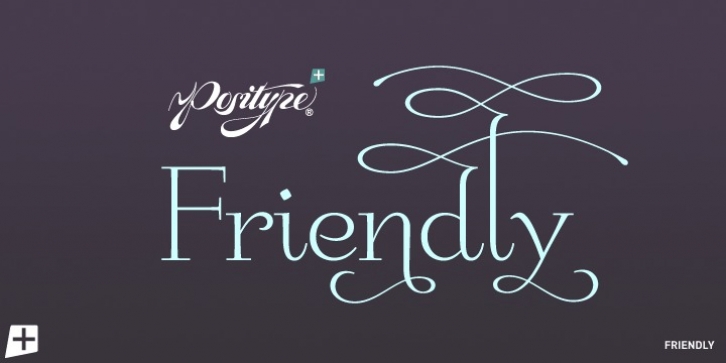Friendly was designed by Morris Benton, Neil Summerour and published by Positype. Friendly contains 2 styles and family package options.
Friendly is an homage to Morris Fuller Benton’s adorable Announcement typeface. It is not a strict interpretation, digital revival or reverent reproduction of the original letterforms… but I would be remiss and shady to not acknowledge the letterforms that inspired this typeface. If you are looking for a more accurate ‘scanned revival’ I would recommend searching ‘Announcement’ on MyFonts. As stated earlier, it is an homage to the original letterforms of the typeface but takes a great bit of freedom tightening the construction up in order to loosen up the movement of the variant letterforms to allow a great deal of usable personality. I enjoy stating this dichotomy… ‘loosen up to tighten up the forms’ and vice versa. It seems counterintuitive or silly but by allowing the letterforms to normalize, I felt more comfortable going back and adding rather indulgent personality. Infused with stylistic alternates, swashes, titling, many many contextual alternates, 9 stylistic sets and 2 stylistic sets with wordmarks, the typeface became far more ‘friendly’ for me… how could it not? With so many loops, swashes and typographic indulgences, it was bound to be fun.
The more elaborate and ‘overdone’ Friendly got, the more I wanted to slant it. Here’s where my thinking differs from MFB’s original. I like slanted romans… especially ones with long ascenders, but I do not like much of a slant. It has to be the lettering person in me. It’s hard for me to do a completely upright serif and not pair it with an angle, but I did not feel Announcement’s ‘Italic’ offered much and the actual slant needed to be far less. If it’s not an italic, I prefer the letters to slant with an angle equivalent to the thickness of the vertical stroke. The Slanted version of Friendly is set at 3.6 degrees, is quite subtle, and very fitting for me.
You will find that most characters have a contextual, stylistic, swash and titling alternate assigned to them and some have an echoed alternate to the swash and titling options if the stylistic alt has been selected in tandem. Additionally, all of these are accessible in the glyph palette directly from the base glyph typed or through selecting options through the Stylistic Sets 1–9. Stylistic Sets 10 & 11 are a little different. They are actually configured as complex majuscule ligatures… a result of me getting carried away.
Other features like a default old style numeral set and coordinating glyphs have been produced along with case support, ordinals, and more have been added to make it more relevant for contemporary use.

